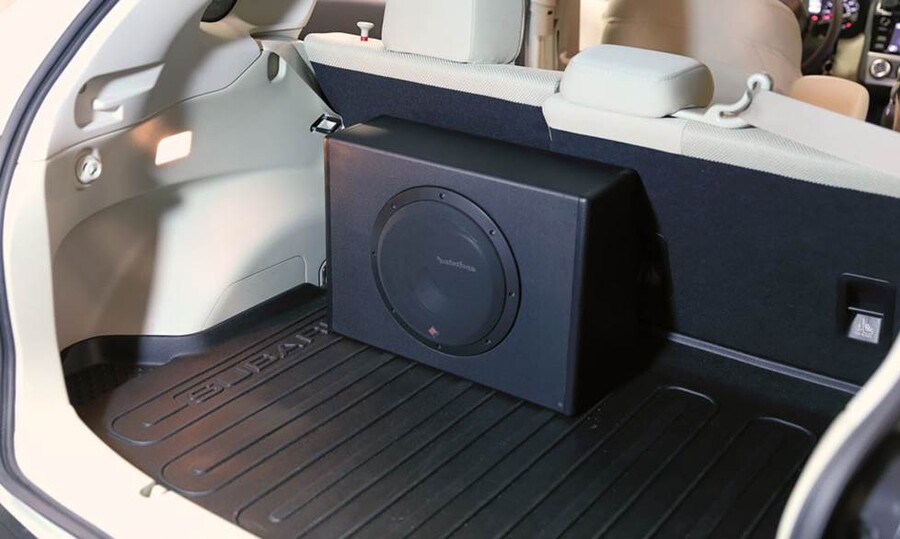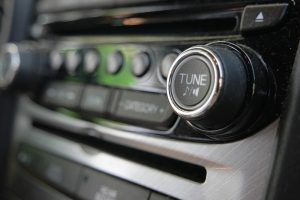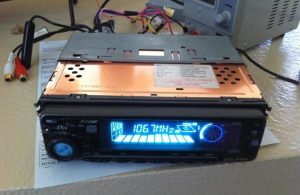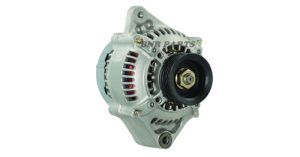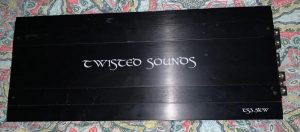Subwoofers deliver the deep, rumbling bass that transforms music, movies, and gaming into immersive experiences. However, a common question arises among audio enthusiasts: do subwoofers need to warm up before they perform at their best? This notion of “warming up” sparks debates in car audio and home theater communities. Some swear by it, claiming their subwoofers sound richer after a break-in period, while others dismiss it as a myth. In this guide, we’ll explore the concept of subwoofer warm-up, break-in periods, and how to optimize your subwoofer’s performance. By the end, you’ll understand whether warming up your subwoofer is necessary and how to get the most out of your audio setup.
Contents
What Does “Warming Up” a Subwoofer Mean?
When people talk about warming up a subwoofer, they usually refer to two distinct concepts: short-term warm-up and long-term break-in. Let’s clarify these terms to avoid confusion.
Short-Term Warm-Up
Short-term warm-up involves playing audio through the subwoofer for a few minutes before it reaches its optimal sound quality. The idea is that the subwoofer’s components, like the cone, voice coil, and surround, need to loosen up during a listening session. Some believe this process enhances bass response, making it tighter and more accurate.
Long-Term Break-In
Long-term break-in refers to a period—often hours, days, or even weeks—during which a new subwoofer gradually reaches its full potential. Manufacturers and audiophiles suggest that the mechanical parts of a subwoofer, such as the suspension and spider, become more flexible with use. This flexibility supposedly improves sound quality, delivering deeper bass and better clarity.
Both concepts raise questions about whether they’re rooted in science or simply audio folklore. Let’s dive deeper into the mechanics of subwoofers to find out.
How Subwoofers Work
To understand whether subwoofers need warming up, you need to grasp how they function. A subwoofer is a specialized speaker designed to reproduce low-frequency sounds, typically between 20 Hz and 200 Hz. These frequencies create the powerful bass you feel in your chest during a movie explosion or a hip-hop beat.
Key Components of a Subwoofer
- Cone: The large, vibrating surface that moves air to produce sound.
- Voice Coil: A coil of wire that interacts with the subwoofer’s magnet to drive the cone.
- Surround: The flexible ring around the cone that allows it to move freely.
- Spider: A flexible component that keeps the voice coil aligned while allowing movement.
- Magnet: Creates the magnetic field that drives the voice coil.
When you play audio, the voice coil moves the cone back and forth, pushing air to create sound waves. The surround and spider ensure smooth, controlled motion. Over time, these components may experience slight changes in flexibility, which ties into the break-in debate.
Do Subwoofers Need a Break-In Period?
The idea of a break-in period stems from the mechanical nature of subwoofers. New subwoofers often have stiff components, particularly the surround and spider. These parts may require time to loosen up, allowing the cone to move more freely. Let’s examine the arguments for and against break-in periods.
Arguments for Break-In Periods
Many manufacturers recommend breaking in a subwoofer to achieve optimal performance. They claim that playing music or test tones for 10 to 40 hours softens the suspension, leading to:
- Improved Bass Response: Looser components allow the cone to move more efficiently, producing deeper and more accurate bass.
- Enhanced Sound Clarity: A broken-in subwoofer may deliver cleaner low frequencies, reducing distortion.
- Long-Term Durability: Gradually breaking in the subwoofer prevents damage from pushing it too hard right out of the box.
Some audiophiles share anecdotes about their subwoofers sounding better after weeks of regular use. They notice tighter bass and more dynamic sound, especially in car audio systems or home theater setups.
Arguments Against Break-In Periods
Skeptics argue that break-in periods are unnecessary or exaggerated. They point out that modern subwoofers are designed to perform well straight from the factory. Here’s why some dismiss the break-in concept:
- Minimal Mechanical Changes: Studies suggest that any changes in a subwoofer’s suspension are minor and barely audible.
- Psychoacoustic Bias: Listeners may perceive improvements due to their expectations or growing familiarity with the subwoofer’s sound.
- Factory Testing: Many manufacturers test subwoofers before shipping, effectively pre-breaking them in.
While the debate continues, science leans toward minimal changes during break-in. However, the placebo effect and subtle improvements in specific subwoofers keep the idea alive.
Does Short-Term Warm-Up Make a Difference?
Unlike break-in periods, short-term warm-up focuses on immediate performance. Some claim that playing a subwoofer for 5–10 minutes before critical listening improves sound quality. Let’s explore why this might happen.
Why Warm-Up Might Matter
- Component Flexibility: The surround and spider may become slightly more pliable as they move, allowing smoother cone motion.
- Voice Coil Temperature: As the voice coil warms up, its electrical resistance changes, potentially affecting performance.
- Amplifier Optimization: The amplifier powering the subwoofer may stabilize after a few minutes, delivering consistent power.
These factors could, in theory, enhance bass output. However, the differences are often subtle and depend on the subwoofer’s design and materials.
The Reality of Short-Term Warm-Up
For most users, short-term warm-up has little impact. Modern subwoofers and amplifiers are engineered for instant performance. Unless you’re an audiophile with a highly sensitive setup, you’re unlikely to notice a difference. Instead, focus on proper setup and calibration for the best results.
How to Break In a Subwoofer (If You Choose To)
If you decide to break in your subwoofer, follow these steps to do it safely and effectively. A careful approach prevents damage and ensures optimal performance.
Step 1: Start with Low Volume
Play music or test tones at 25–50% of the subwoofer’s normal volume. Choose bass-heavy tracks with dynamic low frequencies, like electronic, hip-hop, or orchestral music. Avoid pushing the subwoofer to its limits during this phase.
Step 2: Use a Variety of Frequencies
Expose the subwoofer to a range of low frequencies. You can use a test tone generator or a playlist with diverse bass content. This approach helps loosen the suspension evenly.
Step 3: Gradually Increase Volume
After 5–10 hours, slowly increase the volume to 75% of normal levels. Continue playing music for another 10–20 hours. Monitor the subwoofer for signs of distortion or overheating.
Step 4: Test at Full Potential
Once you’ve logged 20–40 hours, test the subwoofer at its full capacity. Play demanding tracks or movie scenes to evaluate bass depth and clarity. Adjust settings like crossover frequency and phase if needed.
Tips for Safe Break-In
- Avoid Clipping: Ensure your amplifier doesn’t send distorted signals, which can damage the subwoofer.
- Monitor Temperature: Check that the voice coil and amplifier stay cool during extended play.
- Be Patient: Break-in takes time, so don’t rush the process.
By following these steps, you can break in your subwoofer without risking damage. Even if the improvements are subtle, you’ll have peace of mind knowing you’ve optimized your setup.
Optimizing Subwoofer Performance
Whether or not you believe in break-in periods, proper setup and maintenance significantly impact your subwoofer’s performance. Here are practical tips to get the most out of your bass.
1. Position the Subwoofer Correctly
Placement affects bass quality. Place your subwoofer in a corner or along a wall for maximum output, but experiment to avoid boomy or uneven sound. In car audio systems, ensure the subwoofer faces an open space for optimal acoustics.
2. Calibrate Settings
Adjust the crossover frequency to blend the subwoofer with your main speakers. Set the phase to align the subwoofer’s output with other speakers. Use a sound level meter to balance volume levels.
3. Choose the Right Amplifier
Match your subwoofer with an amplifier that delivers sufficient power without overloading it. Check the subwoofer’s RMS rating and ensure the amp’s output aligns.
4. Maintain Your Subwoofer
Keep the subwoofer clean and free of dust. Inspect the surround and cone for wear over time. Avoid exposing it to extreme temperatures or humidity, especially in car audio setups.
5. Use High-Quality Source Material
Play lossless audio files or high-bitrate streams for the best sound. Low-quality files can mask your subwoofer’s true potential.
Common Myths About Subwoofer Warm-Up
Let’s debunk some misconceptions that cloud the warm-up debate.
Myth 1: All Subwoofers Need Break-In
Not all subwoofers require a break-in period. High-end models with pre-tested components may perform optimally out of the box. Check your manufacturer’s recommendations.
Myth 2: Warm-Up Drastically Changes Sound
While break-in may refine bass response, the changes are often subtle. Don’t expect a night-and-day difference.
Myth 3: You Must Use Special Break-In Tracks
Any bass-heavy music works for break-in. You don’t need expensive test tones or proprietary tracks.
When to Skip Break-In
In some cases, breaking in a subwoofer isn’t worth the effort. Skip it if:
- You’re using a pre-owned subwoofer that’s already been used extensively.
- The manufacturer states that break-in is unnecessary.
- You’re satisfied with the sound quality right away.
Trust your ears and prioritize enjoyment over rigid processes.
Conclusion
Do subwoofers need to warm up? The answer depends on your perspective. Long-term break-in periods may offer subtle improvements by loosening mechanical components, but the effect is often minimal. Short-term warm-up is even less critical, as modern subwoofers deliver near-instant performance. Instead of obsessing over warm-up, focus on proper setup, calibration, and maintenance to unlock your subwoofer’s full potential.
By positioning your subwoofer strategically, fine-tuning settings, and using quality audio sources, you’ll enjoy deep, powerful bass that elevates every listening experience. Whether you’re a car audio enthusiast or a home theater buff, a well-optimized subwoofer delivers the low-end punch you crave. So, crank up your favorite track, feel the bass, and let your subwoofer shine.
